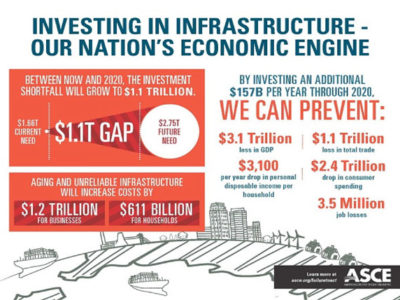Energy
Conflicting News about President-Elect Trump and Climate Change
Transition Team Uniformly Anti-Climate but Trump Signals Open Mind to NY Times
Today we got a sliver of hope from President-Elect Trump about remaining in the Paris Agreement. He also acknowledged a connection between human activity and climate change, something obviously at odds with his campaign rhetoric. Trump told the New York Times he would “keep an open mind” about the U.S. commitment to the Paris Agreement. He …
Continue reading “Conflicting News about President-Elect Trump and Climate Change”
CONTINUE READINGBe Thankful for Millennials – Our Best Environmental Hope
The present belongs to Trump. The future is a lot greener.
We may not have much to be thankful right now, but I do have one bright thought for Thanksgiving. These are dark days for the cause of environmental protection, and it would be easy to give way to despair. But I continue to believe that prospects will improve. This election was a huge and costly …
Continue reading “Be Thankful for Millennials – Our Best Environmental Hope”
CONTINUE READINGWhat Does a Trump Presidency Portend for California’s Environmental Policies?
Constitutional Issues Loom Large in Future, Likely Federal-California Legal Confrontations
Sensing political storm clouds ahead, California Governor Jerry Brown yesterday issued a statement on the presidential election results that concludes: “We will protect the precious rights of our people and continue to confront the existential threat of our time–devastating climate change.” Several of my Legal Planet colleagues have recently posted thoughtful commentary on what Donald Trump’s …
Continue reading “What Does a Trump Presidency Portend for California’s Environmental Policies?”
CONTINUE READINGStill Undecided? Here’s What You Need to Know
Trump says climate change is a hoax & favors more coal and oil. Clinton wants climate action.
The positions of the two candidates on climate change are polar opposites. Trump wants to undo all of Obama’s effort to fight climate change and increase renewable energy. He views climate change as a hoax. In fact, just this past Tuesday, he vowed to abolish all U.S. climate programs. Clinton views climate change as a …
Continue reading “Still Undecided? Here’s What You Need to Know”
CONTINUE READINGUC Berkeley & UCLA Law Launch New Climate Policy Website
Register for a webinar on the new site’s features on Wednesday at 2pm, with a keynote by Mary Nichols
To meet the challenge of climate change, California and other governments will need to adopt a suite of policies affecting multiple sectors. Reducing economy-wide greenhouse gas emissions will take reforms in energy, land use, transportation, and agriculture, to name just a few. Since 2009, UC Berkeley and UCLA Schools of Law, with the generous support …
Continue reading “UC Berkeley & UCLA Law Launch New Climate Policy Website”
CONTINUE READINGLet’s Get America Moving Again
Make infrastructure a top priority for the new Congress
There’s actually one policy that Clinton and Trump agree on: the need for a massive investment in infrastructure. However the election comes out, that should be a top legislative priority, combining economic, safety, and environmental benefits – and political benefits for the next President because of its popularity. It would help get the country moving …
Continue reading “Let’s Get America Moving Again”
CONTINUE READINGObama’s Remarkable Environmental Achievements
When you look at the whole of his legacy, it’s a stunning record.
When he leaves office in January, President Obama will have compiled a remarkable record of environmental achievements. The record spans everything from climate change to endangered species and ocean protection. We can only hope that next Tuesday’s election doesn’t undo many of these gains. Here is a list, in no particular order, of twenty of …
Continue reading “Obama’s Remarkable Environmental Achievements”
CONTINUE READINGConfronting the “Emissions Gap”
Long-term thinking and short-term deficiencies in climate change mitigation
With the Paris Agreement now ratified by 86 countries, and entering into force this Friday, countries have defined their first targets—the first round of nationally determined contributions (NDCs). The United States has pledged to reduce GHG emissions 26-28% below 2005 levels by 2025. This initial round of NDCs is significant, but represents only a short timeframe and …
Continue reading “Confronting the “Emissions Gap””
CONTINUE READINGGuest Bloggers Alice Kaswan and Kirsten Engel: Untapped Potential: Emissions Reduction Initiatives Beyond Clean Power Plan Are Warranted, Workable
New Report Analyzes Potential for Further Emissions Reduction from Existing Sources
Guest post by Alice Kaswan (University of San Francisco School of Law), Kirsten H. Engel (University of Arizona School of Law) It’s been a month since the D.C. Circuit heard oral arguments on the Clean Power Plan, and the nation is in wait-and-see mode. But our report, Untapped Potential: The Carbon Reductions Left Out of …
CONTINUE READINGBattle for the Senate: North Carolina
An unexpectedly close Senate race in the Tar Heel State.
The North Carolina case features Deborah Ross (D) against incumbent Richard Burr (R). Neither is a well-known figure nationally. Ross was a lawyer and state representative. More surprisingly for a candidate in a Southern swing state, she served as executive director for the state ACLU. Her website reports that she had a 94 percent lifetime score from …
Continue reading “Battle for the Senate: North Carolina”
CONTINUE READING










